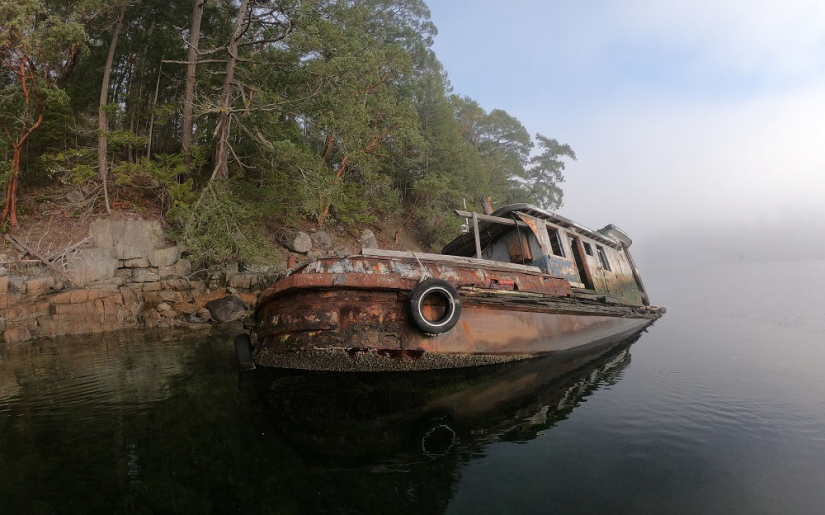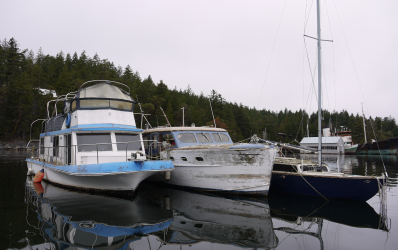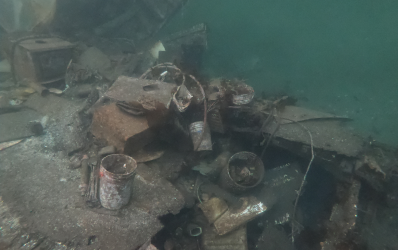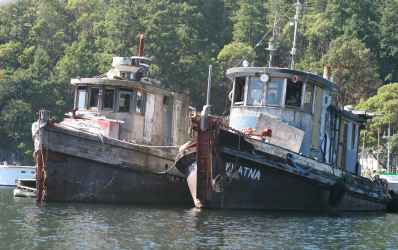




If you share our vision for clean, safe, and beautiful harbours, we welcome your support. You can contribute to our efforts by making a donation earmarked for “Derelicts” through our website. Click here. Every contribution helps us maintain the health and beauty of Pender Harbour for current and future generations.

Vessels of concern, including wrecked, abandoned, hazardous, or worn-down (dilapidated) boats, can create issues to local public health and safety, the environment, and the economy. Not only are they unsightly objects, but they can also contaminate our waters, impact local tourism and shipping routes, and affect the marine ecosystem.
Vessels of concern are typically illegally moored. Mooring buoys must adhere to strict regulations including specific identification and limit the maximum size of vessels moored to a buoy to 12 metres and only a single vessel can be attached to a mooring. According to Transport Canada’s Office of Boating Safety’s Small Vessel Regulations, vessels at anchor must also show approved all round white anchor lights at night.
PHARA is also seriously concerned about the discharge or raw sewage from liveaboard vessels. Under the Canada Shipping Act, a ship that has a toilet on board must have a holding tank or an approved marine sanitation device. Under that act, the discharge of untreated sewage into all Canadian inland waters and Canadian coastal waters within three nautical miles of land is banned.